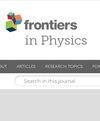Impact of carboxylic acid structure on α-hemihydrate gypsum crystal morphology and mechanical strength
IF 1.9
3区 物理与天体物理
Q2 PHYSICS, MULTIDISCIPLINARY
引用次数: 0
Abstract
This study investigated the synthesis of α-hemihydrate gypsum (α-HH) through semi-liquid autoclaving of phosphogypsum (PG) using various carboxylic acids as modifying agents. The impact of carboxyl group spatial location, auxiliary functional group type, and the number of carboxyl groups within the carboxylic acid modifiers on the mechanical strength and crystal morphology of α-HH was analyzed using scanning electron microscopy (SEM), strength testing, and molecular dynamics simulations. The results revealed a significant influence of the carboxylic acid molecular structure on the α-HH crystal morphology. Monocarboxylic acids and dicarboxylic acids with a long carbon chain length between carboxyl groups exhibited preferential adsorption on the (200), (110), and (−110) crystal planes, promoting crystal growth along the c-axis. In contrast, hydroxyl groups and cis double bonds in the modifier structure induced selective adsorption on the (001) plane, hindering growth along the c-axis. Conversely, trans double bonds favored adsorption on the (200), (110), and (−110) planes, enhancing growth along the c-axis. Based on these observations, screening principles for carboxylic acid modifiers were established, suggesting that: 1) the number of carboxyl groups should exceed 2; 2) the optimal carbon atom spacing between carboxyl groups is 3; and 3) auxiliary functional groups such as hydroxyl groups and cis double bonds should be introduced. Modifiers like citric acid, ethylene diamine tetraacetic acid (EDTA), and pyromellitic acid, within concentration ranges of 0.05%–0.1%, 0.1%–0.15%, and 0.05%–0.1%, respectively, yielded α-HH with flexural strengths exceeding 4 MPa and compressive strengths greater than 35 MPa, demonstrating the validity of these principles.羧酸结构对 α-半水石膏晶体形态和机械强度的影响
本研究探讨了以各种羧酸为改性剂,通过对磷石膏(PG)进行半液体高压蒸煮合成α-半水石膏(α-HH)的过程。利用扫描电子显微镜(SEM)、强度测试和分子动力学模拟分析了羧基的空间位置、辅助官能团类型以及羧酸改性剂中羧基的数量对 α-HH 的机械强度和晶体形态的影响。结果表明,羧酸分子结构对 α-HH 晶体形态有显著影响。羧基之间碳链长度较长的一羧酸和二羧酸会优先吸附在 (200)、(110) 和 (-110) 晶面上,促进晶体沿 c 轴生长。与此相反,改性剂结构中的羟基和顺式双键会选择性地吸附在(001)平面上,阻碍晶体沿 c 轴生长。相反,反式双键有利于吸附在 (200)、(110) 和 (-110) 平面上,从而促进沿 c 轴的生长。根据这些观察结果,我们建立了羧酸改性剂的筛选原则,即:1:1) 羧基的数量应超过 2 个;2) 羧基之间的最佳碳原子间距为 3 个;3) 应引入羟基和顺式双键等辅助官能团。柠檬酸、乙二胺四乙酸(EDTA)和吡咯烷酮酸等改性剂的浓度范围分别为 0.05%-0.1%、0.1%-0.15% 和 0.05%-0.1%,它们产生的 α-HH 抗折强度超过 4 兆帕,抗压强度超过 35 兆帕,证明了这些原则的正确性。
本文章由计算机程序翻译,如有差异,请以英文原文为准。
求助全文
约1分钟内获得全文
求助全文
来源期刊

Frontiers in Physics
Mathematics-Mathematical Physics
CiteScore
4.50
自引率
6.50%
发文量
1215
审稿时长
12 weeks
期刊介绍:
Frontiers in Physics publishes rigorously peer-reviewed research across the entire field, from experimental, to computational and theoretical physics. This multidisciplinary open-access journal is at the forefront of disseminating and communicating scientific knowledge and impactful discoveries to researchers, academics, engineers and the public worldwide.
 求助内容:
求助内容: 应助结果提醒方式:
应助结果提醒方式:


